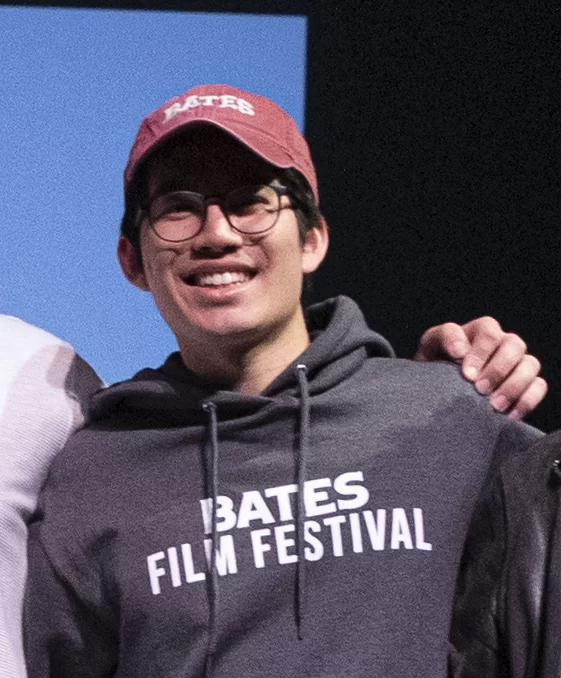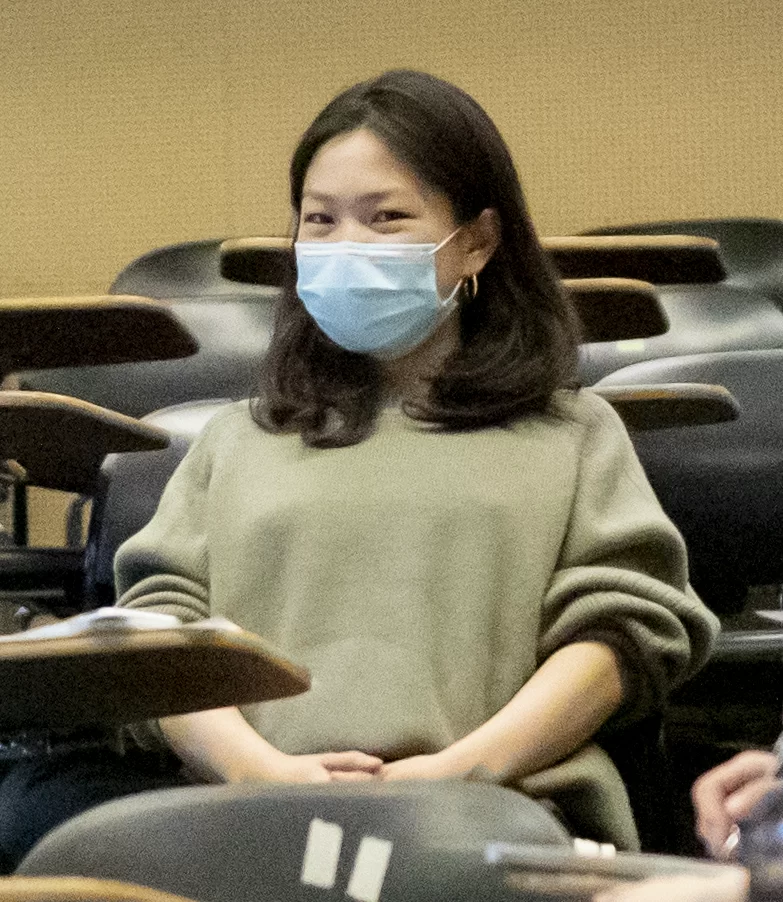By Tristan Van Rooden (BFF 2019, Bates Class of 2020)
Being a part of the festival board for the 2019 Bates Film Festival has without a doubt been one of the most fulfilling experiences that I have had throughout my time as a student both at Bates and in high school. The ability to experience so much of how a festival is organized, run, planned, and executed in such a short period of time made for an intense but rewarding class. Given that the period in which we, as students, were actively involved with the festival was so short there were many aspects of the festival which I thought, given the opportunity to plan for a longer duration, could have been stretched out and reflected on more as we went along. Examples of events that may have benefitted from more of our attention were such ideas that mainly surrounded the films of the festival in an auxiliary capacity, meaning that though they were not necessary to the festival per se, they greatly enhanced the experience. These are events such as the kickoff event, or tabling in commons, or in general having events that allude to other aspects of the festival and serve to heighten the actual film viewing experience. It is, however, very understandable that we did not dedicate as much time as some may have liked due to the fact that in this same time period all of the programming selections also had to be made.
“The ability to take what we had learned in our other rhetoric classes and incorporate that knowledge into our selection process was an extremely rewarding experience, and also gave me a direct understanding of how the classes that I have taken at Bates have influenced how I decode film and media.”
Deciding the programming of the festival was hands-down my favorite part of the entire process. The ability to take what we had learned in our other rhetoric classes and incorporate that knowledge to our selection process was an extremely rewarding experience, and also gave me a direct understanding of how the classes that I have taken at Bates have influenced how I decode film and media. I think that beginning with the programming aspects of the festival started the class with a very good barometer of what we wanted the rest of the festival to look like and allowed us to base the image of the festival in the films that we had watched and ended up selecting. For the first few weeks of the semester, we would meet every Thursday night and watch two back-to-back features which we would then rate on a rubric for multiple categories. By watching two films at a time, it allowed for us as programmers to understand how the films performed in relation to one another (i.e. the other film that it was paired with) while also allowing us to digest and think about the premise of each film. Two films per week was a good amount of viewing as it allowed for us to really consider the merit of every movie that we watched and how it could work with the other features that we would potentially select.
“I think that in retrospect the rubric process actually greatly helped because it allowed for me to fill in the rubric right after viewing the film while my impressions were fresh, but also allowed for me to revisit my critiques and criticisms later when we had watched all of the potential features, and evaluate how my personal understanding of what makes a good ‘festival film’ had changed.”
Personally, I felt that our rubric system of evaluating the movies really allowed me to unpack how I interpreted the film after watching it, and also how I felt about the film after having gotten some distance from it. Our rubrics evaluated the films over 8 different categories; point of view, ethical representation, intentional aesthetics/content, emotional engagement, relevance to the festival’s mission statement, perceived relevance to the community, tie-in to broader Bates curricula, and our overall impression of the film. I think that in retrospect the rubric process actually greatly helped because it allowed for me to fill in the rubric right after viewing the film while my impressions were fresh, but also allowed for me to revisit my critiques and criticisms later when we had watched all of the potential features, and evaluate how my personal understanding of what makes a good ‘festival film’ had changed. It was also very important to include notes on the impression of the film immediately after watching it because that made it easier later, when we were making selections, to understand what I was thinking right after watching the film. The film’s longevity of impression proved to be very important as there were many features which I felt very differently about after having gotten distance from the screening. This is important because when considering the audiences at the festival we, as programmers, must also consider both the immediate and long-lasting impression and effect of the films. I feel that this period of reflection between initially watching the film and then later deciding which movies would end up being placed in our festival lineup granted me the ability to discern more completely the full emotional and cognitive effect that the film had had on me, and something that we took very seriously into consideration when deciding our festival lineup.
“When we chose the films to feature the main topics of discussion of course circulated around how big of an audience they would motivate to come see the film, but we were also heavily focused on the potential impact that a film would have on an audience, regardless of the size. Ultimately the potential discussion that we perceived a film would spur for audience members ended up weighing very heavily on which features we wound up selecting.“

One of the most interesting theoretical lenses through which we re-examined the festival was that of Marijke de Valck and her analysis of film festivals operating in a network of cities, actors, and other festivals. De Valck writes that now many festivals “market and project” not just “narrative images” but also a “city’s own ‘festival image’” in relation to other “cities and other festivals” (de Valck 24). As a class and as a festival, BFF’s funding and image were not the pressing problems that de Valck suggests they are for other festivals, which must concern themselves heavily with the dealings of the festivals surrounding them. We did end up selecting a few films that pertain directly to the Lewiston community, but I would argue that the BFF was extremely far from a festival trying to represent Lewiston as a city. The emphasis of the College putting on the festival detracts from the city-synergy of marketing the festival as a Lewiston film festival, but also removes some of the pressures of having to compete on a local scale. De Valck writes on this “global competition” that “exists between festivals” on the major circuits, however, with the unique circumstances that the Bates Film Festival was able to operate under, such as departmental funding which allowed us to negate the need to fill screenings for monetary purposes, allowed for the festival to circumvent much of the competitive nature of the film festival scene (de Valck 25). Part of the reasoning for this is of course how close BFF is to its inception, and maybe down the line as we begin to attract bigger audiences and guests, we may indeed have to worry about the competitive nature of the festival world. I believe that our festival experience is actually much more similar to that of the Rotterdam case study that de Valck examines, where the festival “focuses on issues not relevant to the major ‘A’ festival events, such as the tension between specialized programming and the need to attract a mass audience” (de Valck 25). This point by de Valck is really where I see our programming choices being represented in the literature on festivals. BFF does not have to rely on ticket sales or attracting a massive audience, so in a way that moves a lot of the emphasis of the festival on the films that we are choosing to screen. When we chose the films to feature the main topics of discussion of course circulated around how big of an audience they would motivate to come see the film, but we were also heavily focused on the potential impact that a film would have on an audience, regardless of the size. Ultimately the potential discussion that we perceived a film would spur for audience members ended up weighing very heavily on which features we wound up selecting. I think that we were very lucky to be able to focus on the impact and effects on audience that our selections may have rather than having to worry about attracting the largest audience possible, and I hope that this made for an enjoyable festival experience.
Works Cited
de, Valck, Marijke. Film Festivals: From European Geopolitics to Global Cinephilia, Amsterdam University Press, 2007. ProQuest Ebook Central, https://ebookcentral.proquest.com/lib/bates/detail.action?docID=419760.



